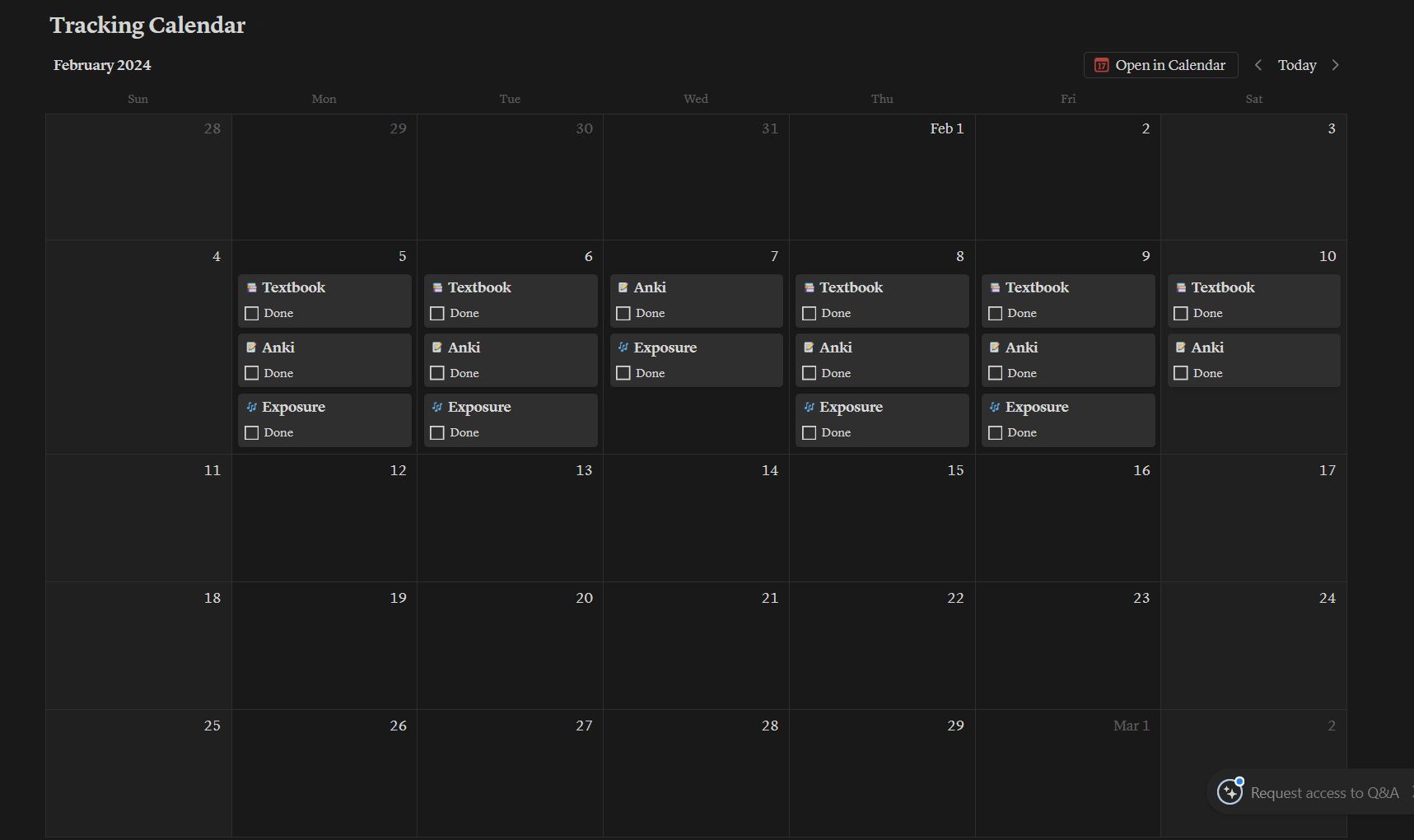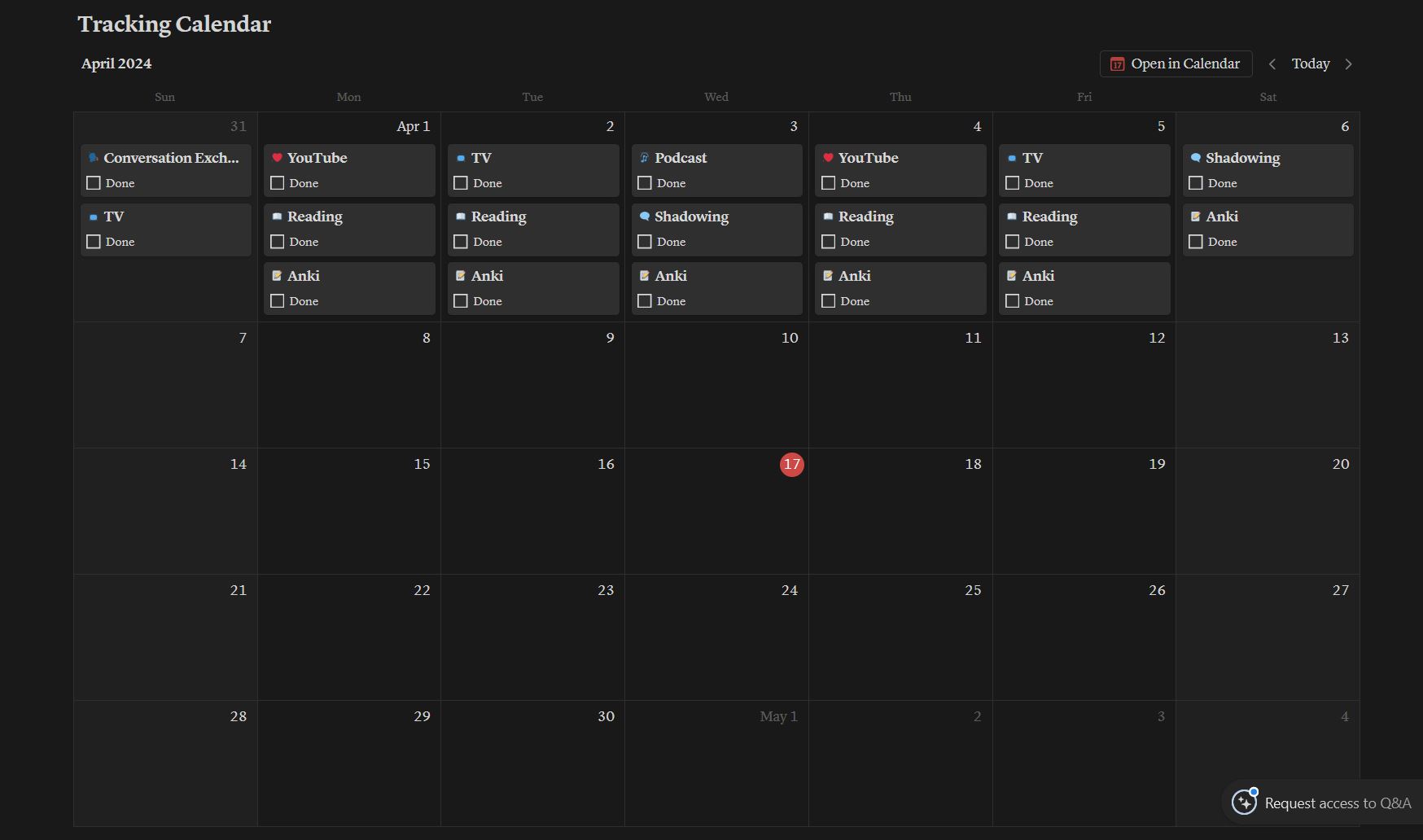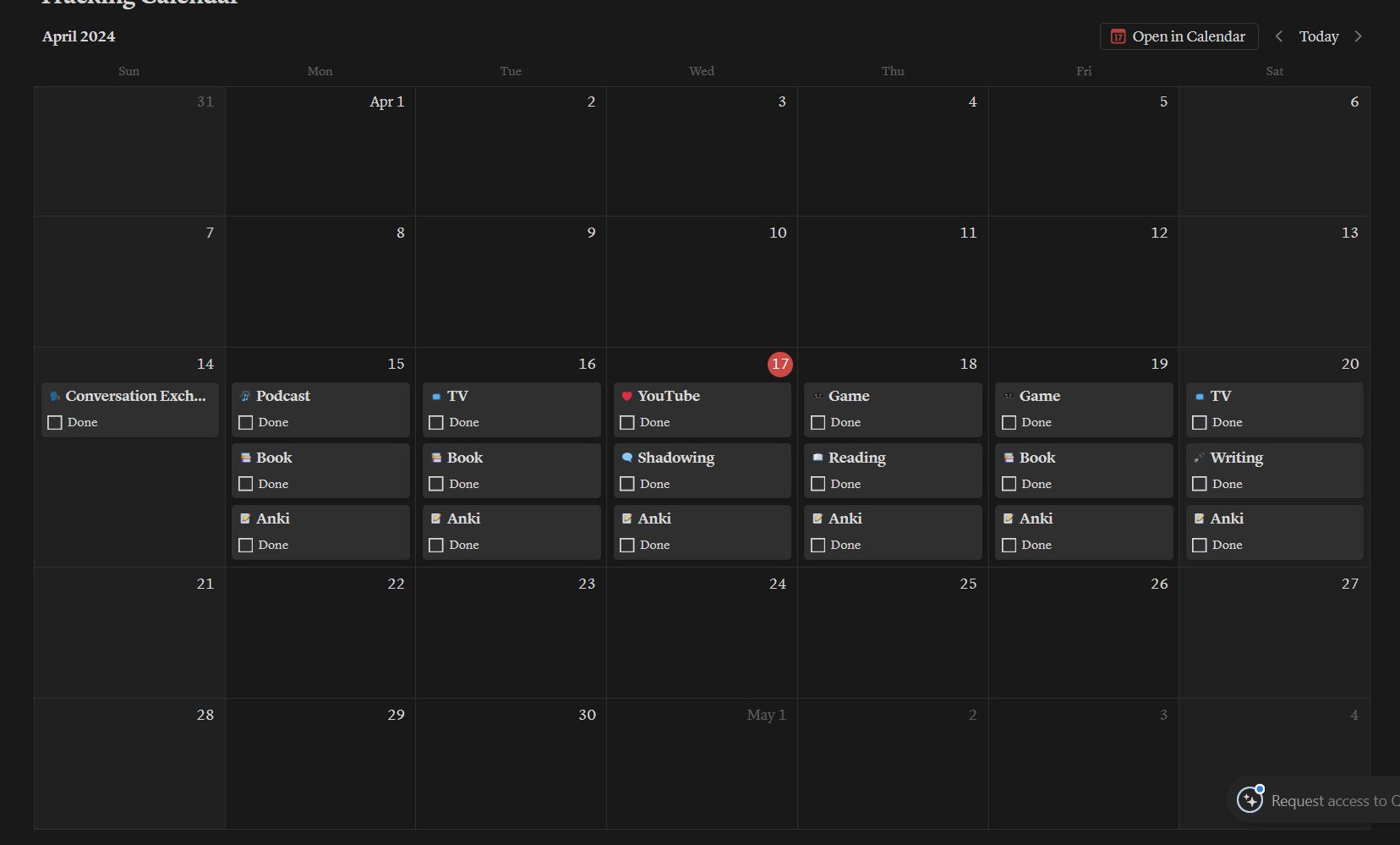About Language Pathways
A language pathway is a guide that will take you from the beginner to the advanced level. In this guide, I won’t be teaching you Japanese directly; rather, I will teach you how to learn Japanese. The amount of resources can be overwhelming, and you can waste a lot of time just trying to figure out what to study. That is why this guide will recommend high-quality resources and provide detailed information on how to use them. Language learning is a journey that looks different for everyone, but remember that consistency and time are the keys to becoming fluent in any language.
Keep in mind that learning a language is a long journey. Despite the claims you see online, there is no way to learn a language in just a few months or even a year. It’s a long, winding path that takes time and consistency to traverse, but it’s also a lot of fun! The goal is to reach a point where you can enjoy all the things you love in your native language, such as movies, books, and video games, in a different language. There will be times when it feels frustrating and you may think you’re not making progress fast enough, but that’s something every language learner experiences. I’ll share a little secret with you: All those videos you see online of polyglots who claim to have learned a language in a few months are often fake. To make one of those videos, all you need to do is memorize some common phrases and edit out the mistakes. Don’t compare yourself to those people. Don’t compare yourself to anyone else. You don’t know how much effort someone has put into studying. Time spent in the language is the biggest factor in your progress. If you can only study for 15 minutes a day, but someone else can study for an hour a day, after one year, the person who studied an hour a day will likely be better than you not because they are better at learning languages, but simply because they’ve spent more time with the language. Remember, any time you spend on a language is not time wasted. You are progressing and learning, and you’ll see the results further down the line. Good luck on your journey, and have fun!

Beginner
So, you’ve decided to study Japanese. Welcome! This will be one of the best things you’ve ever done, while also being one of the hardest. Japanese is a notoriously difficult language, but this guide will help you create a plan that keeps the language interesting while you progress through it. Most people who start Japanese never make it past the beginner phase, but with some time and dedication, you absolutely can do it! The beginner level will take you through the basic grammar and vocabulary of the Japanese language. By the end of the beginner level, you should be ready to comfortably move on to more interesting sources such as articles, TV shows, and podcasts. The beginner level will take most people 6 months to a year to complete, but you may do it faster or slower depending on how much time you study each day. Don’t rush the basics. Having a solid foundation will save you a lot of headaches down the road. Language learning takes a lot of time and patience, so don’t compare yourself to other people. The only journey that matters is your own. The road ahead is long, but you will have a lot of fun along the way!
Now, before you can start studying Japanese, there are a few things you’ll want to prepare ahead of time. The first thing you need to do is install a Japanese IME on your primary devices. An IME will allow you to type in Japanese, which is critical for your Japanese learning. As a foreigner, there are very few circumstances where you’ll have to write Japanese by hand, but a lot of circumstances when you’ll need to type. I recommend focusing on learning how to type over learning how to write unless you enjoy writing by hand.
Next, you’ll need to install Anki or another good SRS flashcard program. Anki is the gold standard when it comes to language-learning flashcard programs. It’s open source, highly customizable, and free on most platforms. It is widely used in the Japanese language learning community, and Anki even means memorize in Japanese.
Finally, the last thing you need to do is learn hiragana and katakana. Hiragana and katakana are the two syllabaries used to write Japanese. They are often called kana when referring to both. This can seem intimidating at first, but the readings are consistent, so it takes just a few days of practice to memorize them. It is important to learn kana before studying grammar and vocabulary because it will affect your ability to pronounce words. You will pronounce words significantly better if you can read, and also, if you want to achieve proficiency, there is no way around it. You need to be able to read. Learning hiragana is what got me hooked on the Japanese language. I loved the experience of being able to read something that was previously meaningless!
Start by watching the video below from Japanese Pod 101, which walks you through all the characters and their readings. Below you will also find Anki flashcards for practicing the characters. I recommend having a piece of paper next to you where you can practice writing the characters. This will help with your memorization. For example, when the flashcard says “a” you will then write “あ” on your piece of paper. If a card asks you to type a character, then just type the character you see. For small characters, type L before the character to make it little. Don’t worry if there are a few characters you can’t remember, you’ll pick them up as you start to practice reading.
Now you’re ready to start learning Japanese. The goal of the beginner level is to build a foundation that will allow you to use fun, native sources. This level is the most study-heavy because you’re starting with nothing. You need to learn vocabulary and grammar to grasp the basics before you can dive into more engaging material. I recommend starting with a textbook. I know studying with a textbook doesn’t sound very fun, but I promise it’s not as bad as it sounds. The reason I recommend starting with a textbook is that it’s well organized and will gradually introduce you to the language. While you won’t get fluent just by using a textbook, it can take you up to an intermediate level pretty quickly. You also won’t be tied to the textbook forever. In fact, your goal should be to move away from textbooks as soon as possible. The article linked below goes into detail on how to use a textbook effectively and offers some other options if you would prefer not to use a textbook.
In textbook resources, you’ll find the Anki decks for the Genki textbook series. You’ll start by reading the lesson in the textbook before working your way through understanding the vocabulary and sentences in the deck. You can adjust how many new cards you study each day depending on the time available to you. You’re focus with these flashcards should be on understanding the words and sentences. Don’t get too hung up on translating things directly. It’s OK if your translation doesn’t exactly match the one on the card. There are many different ways to say the same thing. The point of the English-to-Japanese cards is to get you thinking about how to use grammar patterns. If you’re stuck on a card, move on. It’s better to get more input than to obsess over details. You’ll pick up on these details over time.
You’ll also want a good Japanese-English dictionary to support you throughout your language-learning journey. You’ll use dictionaries frequently, especially as you advance to native-level material. I often use them to create flashcards or to find example sentences. A good dictionary is a tool you’ll never outgrow, and you’ll continue to use it even when you’re very advanced.
As you progress, you will notice more and more kanji in your lessons. I recommend starting to learn kanji pretty early on. You don’t need to be able to write every kanji you come across, you just need to start building familiarity, so you know how to read them. The more kanji you see, the easier it will be to recognize the differences between them. As you learn new words, you should learn the kanji with them. This will make reading Japanese much easier. Do not try to memorize kanji and kanji readings by themselves. Lists of kanji can be very overwhelming, and trying to memorize them is a very inefficient use of time and will not make reading any easier. Kanji is best learned in context. Watch the videos linked below for more information on kanji, kanji radicals, and the most common beginner kanjis.
As you study, you should also get regular exposure to Japanese through Japanese media. This will help you build familiarity with the language and allow you to begin picking out words you’ve learned. TV is a fantastic way for beginners to get input because it creates a fun, positive environment for language learning and sets up the eventual goal of being able to watch shows you enjoy without subtitles. In the beginning, watch shows with English subtitles and focus on the sounds of the language and recognizing words. Dramas are best for learners as they use more language relevant to daily life, but any input is good!
with a suggested study schedule. You can either copy the example or create your own schedule. To access the schedule template, open the link below and click on the “Get Template” button in the upper left corner. If you already have a Notion account, it will be added automatically. If you don’t have a Notion account, you can create a free one.
At this stage, I recommend studying for about an hour a day—thirty minutes of textbook study and thirty minutes of Anki (or however long it takes you to review your Anki decks). In addition to studying, you should also get some exposure every day by watching or listening to media in Japanese. The planner is fully customizable, so you can adjust it to fit your lifestyle. Having a plan is great, but it’s also okay if you’re not always able to stick to it. Be sure to check off your calendar even if you only manage a few minutes of study. This will remind you that you’re making progress, even if it’s just 15 minutes a day. Keep your expectations reasonable and stick to it! You will reach your desired level of fluency one day!

In regards to speaking, I don’t recommend speaking a lot at this level unless that is something you would really like to do. At this level, you should mostly be focused on listening. You can’t speak if you don’t understand. Instead, I would recommend shadowing and mimicking what you hear. All the Anki flashcards you study have audio, and reading the study material out loud after hearing it spoken is a great way to get used to the sounds of a language. You can also record yourself and compare your pronunciation to the flashcard audio. In addition, you should familiarize yourself with Japanese pronunciation. You don’t need to go too much into the specifics until you are more familiar with the language. The video below is all you need to know for now.
Once you have worked your way through the textbook and flashcards, you’re ready to move on! You don’t have to know every single word and grammar pattern from the textbook and flashcards to move on. You’ll need to hear the grammar patterns and words you’ve learned a few times in context before they really sink in. Japanese grammar is also very different from English, so you’ll need a lot of input before you feel comfortable in the language. That’s normal. Often, basic grammar is some of the most complex and can take a lot of time and repetition to learn. For example, は and が are the first particles you learn, but it takes years to really understand the difference between them. If you understand most of the sentences from Genki, then you understand about 1,500 words and you are ready to move on.
Intermediate
Congratulations on making it to the intermediate level! Give yourself a chance to look back and see how far you’ve come. When you first started this journey, you knew nothing, now you should be able to read and understand simple paragraphs and know about 1,500 words. Now it’s time to move on to the fun resources! When you first start using more complex and native sources, you will struggle. This is normal. It’s called the intermediate plateau. The intermediate plateau is when you know a lot of words and basic grammar, but you still can’t understand native material. A lot of people become discouraged when they hit this plateau, and they get stuck at the intermediate level for years. But, you need to keep going. Don’t be afraid of material you don’t understand. You need to stretch a little bit to learn. This guide will help make the transition to native material as painless as possible.
Below, you’ll find an example of an intermediate learner’s schedule, as well as a link to the intermediate Notion planner. You’ll notice that this planner looks a lot more interesting than the beginner planner. That’s because at the intermediate level, your priority shifts to input. You can’t speak if you don’t listen, and you can’t write if you don’t read. Your highest priority should be listening to Japanese, followed by reading, studying vocabulary, speaking, and, lastly, writing. We’ll go into more detail on each of these later.
Feel free to adjust your schedule to fit your lifestyle. On busy days, your study time might be limited to just one YouTube video. However, avoid trying to cram everything into one day. Know your limits and how much you can handle. Studying for six hours won’t be effective if you forget everything you learned. Instead, create a balanced schedule and stick to it consistently. That’s the key to success.
Remember that fewer resources are better than more resources. Don’t jump around watching different TV shows or listening to different podcasts. Find one resource for each category you like, then stick with it for a while. Listen to a single podcast’s episodes or read one book during your study time. This will allow you to focus on the specific vocabulary and grammar used in that resource. Fluency comes in pockets, so every time you switch to a new resource, you’ll be confronted by a bunch of words you don’t know. It’s also always a good idea to re-read or re-listen to content. This will help you remember the vocabulary and grammar better, as well as allow you to pick up on pronunciation and intonation.

Active vs Passive Study
Your study schedule should strike a balance between active and passive learning. You may also hear other language learners refer to this as intensive and extensive learning. Active or intensive learning involves actively breaking down and understanding Japanese content, such as studying flashcards or grammar. Speaking and writing are also considered active activities because they require active recall of the language. Passive or extensive learning, on the other hand, involves listening to or reading Japanese without focusing on the study aspect. Instead, you’re focused on the content itself, absorbing as much input as possible. During passive study, you may use a dictionary to quickly look up words, but you’re not concerned with remembering or fully understanding everything.
The same resource can be used for both active and passive learning. For example, if I read an article and stop at every sentence to look up all the words I don’t know and make flashcards from those words to study them, that’s active learning. If I read the article, quickly look up a few unfamiliar words, and continue reading once I’ve seen the definitions, that’s passive learning. With active learning, it will take you longer to get through a resource, but you’ll remember it better and learn more new vocabulary and grammar. With passive study, you’ll get through the resource faster and gain more input, but you may not retain as much new vocabulary or remember it as well.
Your study time should balance both, as each has its benefits and drawbacks. Since active learning can be mentally draining, I recommend dedicating about 1/3 of your study time to active learning and 2/3 to passive learning.
VPN
Before we dive into any specific resources, let’s talk about VPNs. A VPN, or Virtual Private Network, is an application that will allow you to access region-locked content, such as Japanese language TV shows or apps that can only be accessed in Japan. A VPN allows for better immersion in native content and for you to more easily connect with native speakers. Unfortunately, a good VPN is not free, but they are pretty cheap at only a few dollars a month. While not completely necessary, if you spend money on one language learning tool, it should be a VPN.
Listening
Listening to Japanese is your number one priority from here on out. To speak and understand Japanese like a native speaker, you’ll need to listen to the language as much as a native speaker. When studying a foreign language, many people wonder why it’s so hard to learn another language when their native language was so easy to learn. What they forget is how much time they’ve spent listening to and learning their native language. From the moment you’re born, you are surrounded by your native language every single day. If you hear your language for a minimum of 8 hours a day, that’s about 3,000 hours a year or 15,000 hours by 5 years old, and that’s a low estimate. Most people listen to their native language for most of their waking hours. This includes TV, video games, music, and talking with other people. Then in school, you take classes in your native language until you graduate. Children are not inherently better at language learning; they are just more likely to be in an environment where they need to learn a language, and they are also ok with not understanding everything. The mistake a lot of adults make is to give up and go back to their native language when they can’t understand something. You need to be ok with not understanding everything; that’s part of the learning process. Your comprehension will get better as you progress, especially if you use content you like. Listening to Japanese should be fun! It shouldn’t be a chore. As you improve, you’ll be able to enjoy all the things you enjoy in your native language in Japanese!
To make the transition to native content easier, programs like Trancy and Language Reactor exist to help you along the way. Their main purpose is to assist with your comprehension of Japanese by allowing you to click on words in the subtitles of Japanese videos for an instant translation. These programs also allow you to add dual subtitles so you can have Japanese and English subtitles at the same time. I highly recommend installing the Trancy or Language Reactor extension to help you watch videos in Japanese.
Everyone likes TV shows and movies, and they are fantastic for language learning because they provide dialogue in context. If you have the subtitles on, you can practice reading at the same time. When you first start watching Japanese TV, I recommend J-dramas or slice-of-life anime, since these will be much easier to understand and the vocabulary will be more relevant for daily conversation. Start by watching TV with dual subtitles, then as you improve, switch to using only Japanese subtitles. When you first switch to Japanese-only subtitles, you should start with dramas you’ve seen before in your native language, as these will be much easier to understand than other content.
YouTube is a global platform with creators from all over the world, making it one of the best platforms for language learning. There’s something for everyone on YouTube, and it’s a great place for free content in naturally spoken Japanese.
Podcasts are great for passively listening to Japanese while you do other tasks. There are so many great podcasts for every level that you’re sure to find something you like!
Reading
Reading is a great way to pick up new words and vocabulary at your own pace, and it will dramatically increase your comprehension of both written and spoken Japanese. You should try to read about four times a week for 20 minutes at a time. When you first start reading, you’ll struggle a lot, especially with kanji, but that’s why there are lots of tools available to make reading easier and more fun! I usually read on my phone because it’s the most convenient for me, and it makes it easy to look up words, but you can read on any device you like, as long as you’re reading.
There are lots of reading resources out there, but as a beginner, you should start with articles aimed at non-native speakers. As you improve, you can slowly move on to light novels and manga. While it may be tempting to immediately jump to the stuff you want to read, you should take it slow. Start with something you’ve already read in English, it will help your comprehension a lot. If you start with something you want to read, you’ll be frustrated by your speed and lack of understanding. It’s better to save those materials for later when you’re better at reading.
Vocabulary/Flashcards
At this level, it’s still a good idea to make and study flashcards because it will help you remember new words and grammar patterns. Make flashcards out of words you’ve come across during reading or listening. This will ensure that they are commonly used words. You should also have sentences on all your flashcards, so you can learn the word in context. You can use Anki to study with or a dictionary like Japanese that has built-in flashcards. Just make sure all your flashcards are in one location and you review them regularly. I recommend studying flashcards for 10-15 minutes every day.
Speaking
Even though you’ve learned a lot of Japanese, you probably still don’t feel ready to talk. That’s ok. It takes a lot of time to speak a language easily. Shadowing will help you become familiar with speaking Japanese and develop a good accent. Before you start shadowing, you should brush up on your Japanese pronunciation so you know what to look out for when you practice. You should practice shadowing twice a week for no more than 20 minutes at a time because of how tiring it can be.
If you are really excited to start talking and ready to go for it, you can use a language exchange website to connect with native speakers and practice your conversation skills. However, this is not necessary at this level.
Writing
Writing isn’t very important at the intermediate level, instead, you should focus on reading. If you would like to write, I recommend using a language exchange site, as mentioned above, for connecting with native speakers, so you can practice sending messages in Japanese. This will be more helpful for your Japanese than trying to write journals or essays at this point in your language journey.
What To Do When You Don’t Understand A Sentence
While most of the resources introduced above can easily be paired with pop-up dictionaries and other comprehension assistants, not all sentences will be understandable to you even if you know all the words. When you come across new grammar, the meaning may not be immediately clear. At this level, you should learn new grammar patterns as you come across them, so you can learn common grammar in context. The article below goes into detail on how to look up unknown grammar patterns and use grammar resources.
And that’s everything you need to know for the intermediate level. Once you can easily understand a variety of daily conversation topics and feel comfortable using tools to look up Japanese words and grammar, you’re ready to move on to the advanced level. You should know about 5,000 words at this point and that means you’re ready to start using what you know!
Advanced
Welcome to the advanced level! Very few people make it this far, so you should be really proud of yourself. You’ve come a long way since you first started. This is the level that never ends because learning a language never ends. There will always be parts of the language you don’t know. This is true even for native speakers. Instead of trying to learn everything, you should focus on areas that are most relevant to you and place your goals and attention there. If you want to be able to speak at a business meeting, then you should read a lot of business-related articles and practice writing and speaking using business Japanese. If you want to be able to easily understand anime, then you should watch a lot of anime and even practice writing your own script. You will build pockets of Japanese fluency that will all come together to make you better at the language, and it will be easier to acquire new areas of fluency as you progress. You know all the basics at this point; now it’s just a matter of practice and exposure.
At the advanced level, you should primarily be consuming media created for native Japanese speakers. You’ll also focus more on output, such as writing and speaking, now that you’re familiar with the language. If you look at the schedule below, you’ll notice that it closely resembles the intermediate schedule. This is because you should still be getting plenty of input, but the input should be more challenging. However, writing and speaking should now also have a place in your weekly schedule. These activities can be draining and time-consuming, so start simple, do each for just 30 minutes once a week, and gradually work your way up to longer or more frequent sessions. This is the stage where you’ll see all your hard work pay off as you start having conversations and effortlessly consume native media.

Listening
Listening is still your top priority even at the advanced level; however, you should consume content intended for native speakers almost exclusively. If you’re still using dual subtitles when watching shows, it’s time to get rid of them. You should be relying minimally on your native language at this point, only using it to occasionally look up new words or difficult grammar. Anything in Japanese with audio is a listening resource, so it’s up to you to decide what resources are most relevant for you and suitable for your abilities.
Reading
Reading at this level will mostly consist of books and articles intended for native speakers. I highly encourage you to find your own sources for articles that interest you. If you’re looking for sports articles, search スポーツ and look through the websites that pop up. Bookmark any of the websites you like so you can return to them later. I recommend doing this for every topic you want to learn about in Japanese.
Speaking
You should now have a solid foundation and understand enough Japanese to start talking. I recommend continuing to shadow at least once a week until you can easily mimic native speech. You should also start reaching out to natives to schedule practice sessions and improve your spoken Japanese. As you progress, you should try to connect with Japanese speakers who can’t speak English, so you can fully immerse yourself in conversation.
Writing
Writing regularly will increase your ability to think and process Japanese. It will help you build your vocabulary and expand your grammar capabilities. I recommend starting a journal or a blog where you can keep your writing and track your improvement. You should try to write at least once a week.
Vocabulary/Flashcards
While studying vocabulary and flashcards is always useful, it’s not as necessary at the advanced level. As an advanced learner, you should be able to pick up new words through reading and listening, and then practice using them through speaking and writing. If you enjoy flashcards and find them useful, then continue using them. If you are burnt out from flashcards, take a break from them and focus on immersion.
Congratulations! You now have all the tools and information you need to achieve fluency in Japanese. As you continue on with your journey, finding new resources and learning new topics, I wish you the best of luck. New pathways and opportunities will open for you as you continue to progress and learn. 頑張て!



I found this article so compelling and insightful!
The website is well-maintained and filled with valuable resources.
Thanks a lot for the very detailed and constructive content!